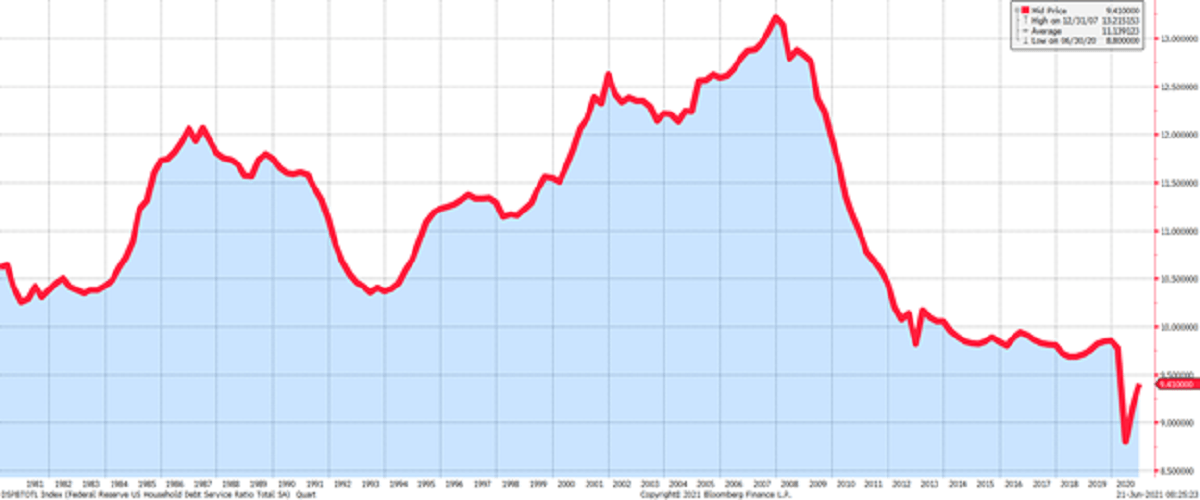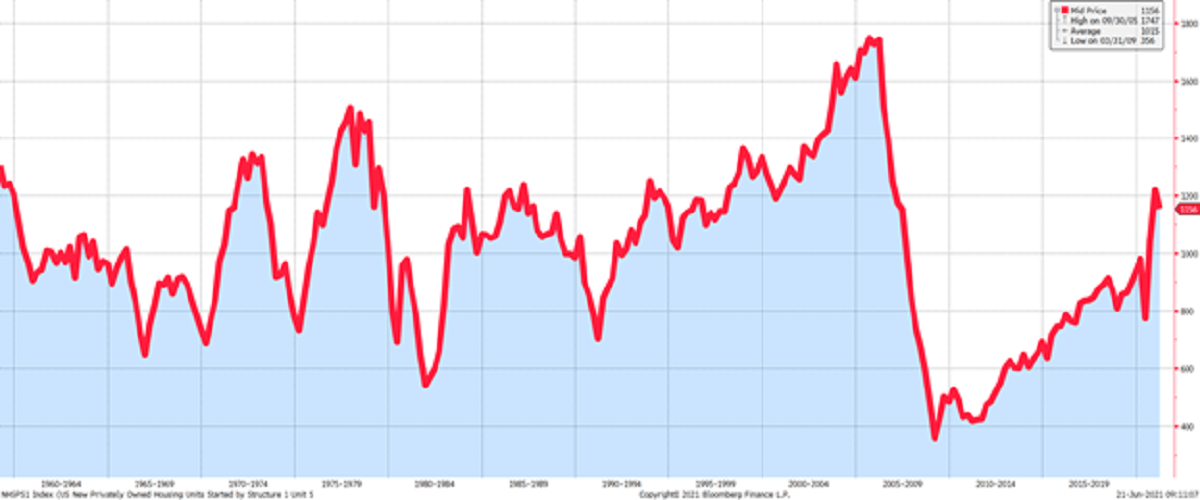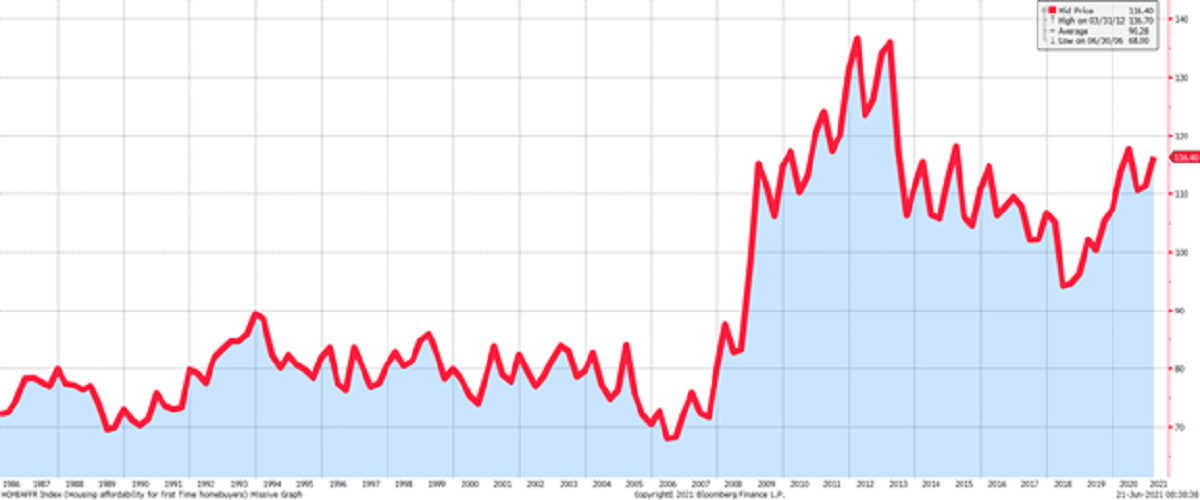Dear fellow investors,
“I don’t get no respect from anyone. Last week my house was on fire, my wife told the kids be quiet. You’ll wake up daddy.” – Rodney Dangerfield
Q1 2021 hedge fund letters, conferences and more
Dear fellow investors,
The Rodney Dangerfield Housing Market
Today’s housing market has done what few people expected and yet, like Rodney Dangerfield, “it don’t get no respect.” Many on Wall Street fear the future of this industry as we’ve risen to levels of homebuilding that we haven’t seen in a long time. Rather than looking at demographics, household financials and other data that points to a very bright future, they just call it crazy. They feel it’s a sugar-high phenomenon. Lastly, they think 50% higher homebuilding from here in the future is impossible. We will look at the data to explain that, as Rodney would say, there is no respect.
The worst of times for US housing was 2007. Everyone loved the story and believed it all to be true, for very poor reasons. There is no reason simpler than the US household debt service ratio at that time. This statistic is published by the Federal Reserve and tracks the amount of gross income that goes to debt payments of any form (mortgage, auto, credit card, etc.). Below is that data since 1980.
After watching US households get as over-levered as they had ever been, the negative pundits in 2008-2009 said that it would be incredibly tough to recover from those circumstances, because of the level of indebtedness. These economists were surely wrong. Instead, we recovered as we slowly cleansed the maladies from our gross income during the 2010’s. We’ve since taken that to a new level of financial discipline today that hasn’t been seen in over 40 years!
US Households Aren’t Dynamic
The same negative pundits have now turned their arguments toward the idea that the households of the US aren’t dynamic, much like they didn’t believe they were in 2008-2009. They don’t believe these same households will increase their borrowing from these depressed levels in areas like cars and homes. They use student debt and other factors as an impetus to be pessimistic. The economic success of the 1980’s and 1990’s was born out of households that had a higher percentage of their income going toward debt payments. Mortgages are always a big component in this data. Relative to 40 years, Rodney would say “it’s tough out there.”
“I tell ya. I’m alright now, but last week I was in rough shape ya know. Last week, I told my wife I need a home improvement loan. She gave me a thousand dollars to move out.” – Rodney Dangerfield
The next vociferous argument that media outlets are making is that millennials are priced out of the housing market. First, remember that if it doesn’t bleed, it doesn’t lead. Second, the data says the opposite. Below is a chart of housing affordability for first time homebuyers from 1986 to the end of the first quarter of 2021.
We shouldn’t feel bad for Millennials. We should feel bad the for the Baby Boomers or Gen Xers that had such unaffordable housing. Prior to 2008, housing hadn’t been affordable based on 1986 as a starting point. It may lead people to disregard the media reports. Instead, they may believe that this isn’t the problem they are making the case for or that housing affordability isn’t the most important factor. After all, we had good housing markets long before 2007’s cleansing arrived, which helped bring this awesome affordability. As Rodney might say, we’re alright now, but we were in rough shape.
“I’ll tell ya, I don’t get no respect… The other day, I got back from a business trip. I got in a cab and said to the driver, “Hey! Take me to where the action is!” So ya know where he took me? He took me to my house!” – Rodney Dangerfield
US Single Family Home Builds
The action is on houses as we have the largest demographic group in US history (Millennials) fast-forwarding their lives toward home ownership. We, as rational and logical consumers and investors, must be creating more US single family home builds than at any point in US history? Again, no respect. Below are the US new single family home builds annualized by quarter since 1959. As investors can see, we aren’t back to any of the highs of the 50’s, 70’s or the 2000’s, despite having a smaller population and a smaller group of potential homebuyers at each of those prior points.
This data on housing leads us to feeling like Rodney always did. He never “got no respect” from anyone, not his parents, not his wife, not from any strangers. As surely as was true for Rodney, housing is getting no respect from investors right now. We advise investors to believe that housing will produce outsized success over the next 10 years relative to stock market returns. We like where this puts our investors in US homebuilding companies like Lennar (LEN), DR Horton (DHI) and NVR (NVR). Further, it makes us believe that people are being far too dour about the prospects of the economy, due to this same data. Like Rodney’s says, housing is “where the action is.” Right now, it gets no respect.
Fear stock market failure,
Cole Smead, CFA
The information contained in this missive represents Smead Capital Management’s opinions, and should not be construed as personalized or individualized investment advice and are subject to change. Past performance is no guarantee of future results. Cole Smead, CFA, President and Portfolio Manager, wrote this article. It should not be assumed that investing in any securities mentioned above will or will not be profitable. Portfolio composition is subject to change at any time and references to specific securities, industries and sectors in this letter are not recommendations to purchase or sell any particular security. Current and future portfolio holdings are subject to risk. In preparing this document, SCM has relied upon and assumed, without independent verification, the accuracy and completeness of all information available from public sources. A list of all recommendations made by Smead Capital Management within the past twelve-month period is available upon request.
©2021 Smead Capital Management, Inc. All rights reserved.
















